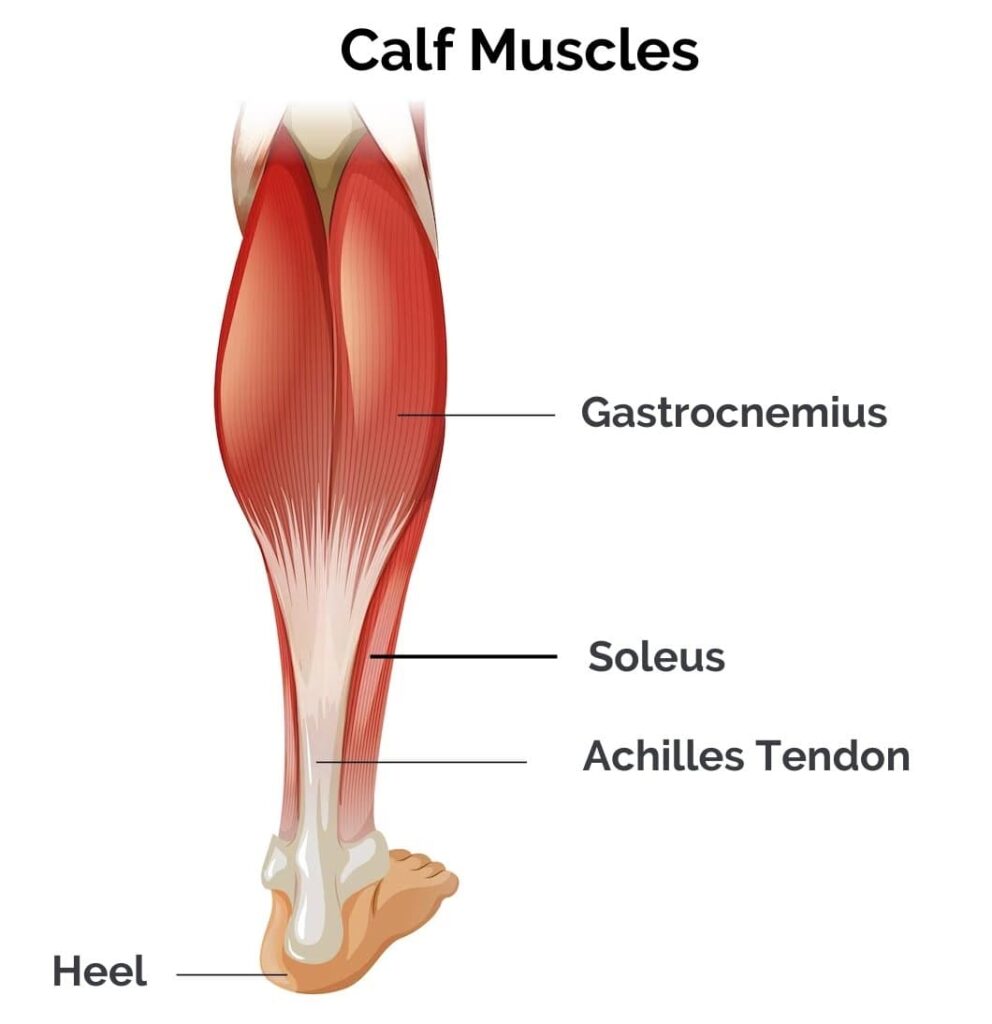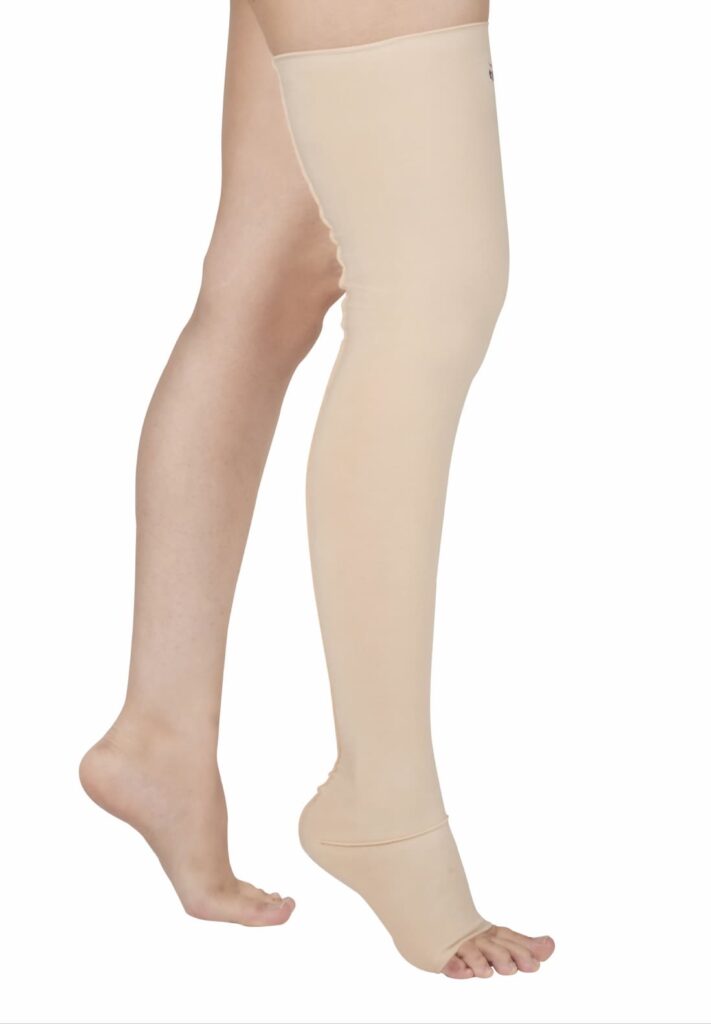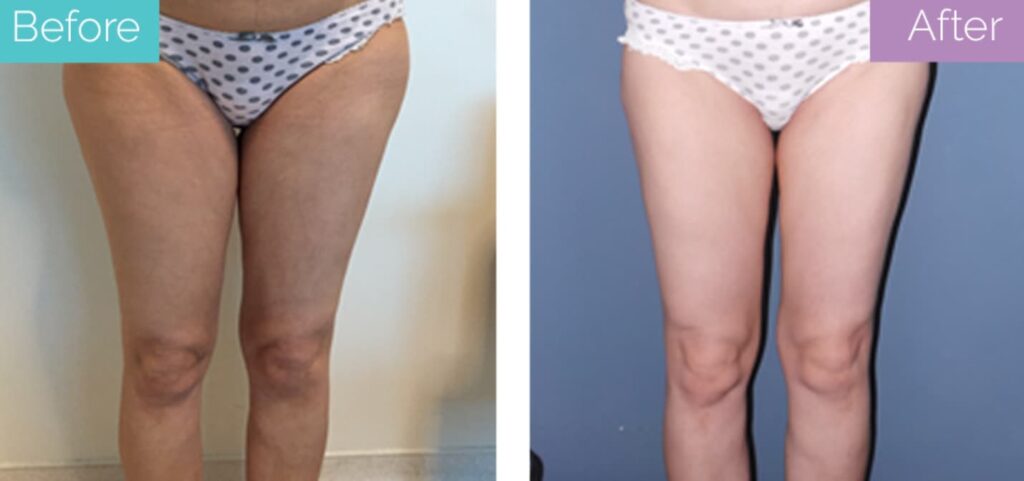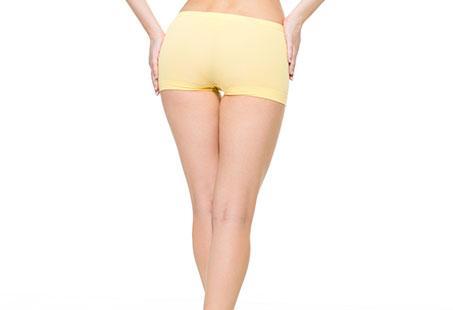Many people find their calves disproportionally large for their size. They look too big or too thick, especially in comparison to the thighs. And unfortunately, calf fat can be a little hard to tackle, even with diet and exercise.
This prompts many people to seek a surgical solution like calf liposuction. While the surgery won’t help you lose weight, it can remove stubborn pockets of fat and improve the contour of your lower legs’ backs.
However, this surgery is not without risks. As a matter of fact, it is more technically challenging than liposuction on other parts of the body. Its recovery is also more difficult and longer.
While this surgery can still give you good results, not everyone is a suitable candidate. With this in mind, it’s very important you find a surgeon who’s experienced in calf liposuction. It’s also important to know what you’re getting into before having this surgery.
What Is Calf Liposuction?
Calf liposuction is a cosmetic surgery for removing excess fat from underneath the calf skin.
The calf refers to the back portion of the lower legs and is actually made up of the gastrocnemius and soleus muscles. These are further attached to the Achilles tendon through connective tissue.

Here, you should note that fat isn’t always responsible for the bulk of calves. Some people have bigger calves because of their muscles. And their size can increase because of exercise or hypertrophy (which can happen due to neuromuscular disorders).
Similarly, if you’re “big-boned,” then too your calves might appear large. Again, it might have nothing to do with the fat in the area.
So, before performing calf liposuction, your surgeon will make sure that it’s fat and not muscle that’s making the calves look large. Usually, a pinch test is done for this.
But fat removal isn’t the only goal of this surgery. Many people also want their calves to look slimmer and more shapely as a result of this surgery. And this surgery can help with that as well.
Still, keep in mind that it’s somewhat “tricker” and even more complex than other liposuctions because of the general anatomy of the calf.
What Will The Procedure Be Like For Calf Liposuction?
The procedure for calf liposuction takes place in three steps: consultation, surgery and aftercare. Here are the details of each:
Pre-Surgery Check Up
The day before your surgery is scheduled, your surgeon will have a face-to-face consultation with you.
During this, they’ll try to get an estimate of the total amount of fat in your calves (especially relative to the muscles and bones).
For your pinch test (result should be at least be 2 cm), your surgeon may ask you to stand on your feet and then your toes to check for muscle definition. If it’s not visible, it’s maybe because of the fat cover.
Additionally, a blood test will be done along with an electrocardiogram (ECG) to make sure that you can safely undergo this surgery.
Calf Liposuction Surgery
Your surgeon will begin by administering local or general anaesthesia. After it takes effect, they’ll make small incisions at the top and bottom of the calf.
A cannula is used to break the fat, which is then suctioned out (only a few litres are removed) with the help of a vacuum. Following that, the skin is sewn back up.
To improve the shape of their entire legs, some people also combine this surgery with liposuction of the knees and thighs. Calf and ankle liposuctions are also common.
While it may sound simple enough, the surgeon has to be very careful about using the right instruments and techniques to remove the fat. The placement of the incisions and varying thickness of the skin is also carefully considered for this surgery.
As mentioned above, it’s not just about removing fat. In fact, in certain areas, the surgeon chooses to leave the fat behind (like over the gastrocnemius muscle) for better aesthetic results.
Post Operation Aftercare
After you’re discharged, you’ll be advised to take certain painkillers, antibiotics and anti-swelling for the management of post-op side effects.
Patients usually experience significant pain after surgery. It can also be accompanied by discomfort and swelling. The latter can last for a few months, but it gets better with time.
To help with the swelling, your surgeon might recommend keeping the legs elevated for a few days to a week. You can move around for a few minutes after regular intervals.
In addition to this, you’ll also be required to wear your compression stockings for a few weeks to months. You can only take them off when you’re going for a shower.

Lastly, you may be recommended massages to help with the calf liposuction recovery. But don’t start them until given the green light by your surgeon.
Your final results should become visible after around 6 months.
Who Can Undergo Calf Liposuction?
You’re a suitable candidate for calf liposuction if you:
- Have achieved your ideal weight
- Have good skin elasticity
- Have pockets of fat in your calves
- Have calves that look asymmetrical
- Have lipodystrophy (abnormally distributed fat)
- Have lipedema (abnormal fat accumulation)
- Want to have slimmer and more defined lower legs
The appearance of calves can also make people feel very conscious about their appearance. Some actively choose to wear clothes that hide their calves. Therefore, this surgery can also help in improving their self-esteem.
Contraindications For Calf Liposuction
You don’t make a good candidate for this procedure if:
- Your calves are big because of their large muscles or bones.
- You have chronic swelling.
- You have a history of deep vein thrombosis.
- You have phlebitis (inflamed veins)
- You have severe varicose veins.
- You have circulation issues.
You need to be healthy in order to undergo this procedure.
How Much Does Calf Liposuction Cost?
In the UK, calf liposuction cost can vary anywhere between £3,000 to £4,000. Since it’s usually a cosmetic surgery, it’s unlikely to be available on the NHS.
You’ll have to get it privately, and the prices of clinics can vary depending on their location, type of anaesthesia, surgical expertise, and extent of surgery. Additionally, consultation, medications (and garments), and aftercare will also cost you a few more hundred pounds.
In the US too, calf liposuction is quite expensive. You can expect it to be around $5,000, but, again, the price can vary depending on different factors.
Surgeons in Turkey also offer this procedure, where it’s much more affordable. Calf liposuction in Turkey will only cost you around £1,500 or so because of the country’s economy.
But no matter where you’re getting this surgery, make sure to do your research because this procedure is very technique sensitive. Otherwise, the results can be very poor.
What Are The Dangers Of Calf Liposuction?
Much of the fear around calf liposuction stems from a rather frightening incident that took place back in 1921.
While performing a calf and ankle liposuction on a ballerina, a French surgeon, Dujarrier, ended up cutting a major artery. The ballerina ended up requiring an amputation.
Here, it should be noted that the surgeon used a uterine curette for this surgery. It is essentially a spoon-shaped instrument that’s used to remove tissue from the uterus.
Of course, liposuction has come a long way since, especially after a blunt cannula was developed in 1978 and the surgical technique was improved.
The overall complication rate of liposuction is around 5% now, and most of the complications are also minor, according to a study published in the Plastic and Reconstructive Surgery – Global Open.
Still, calf liposuction is considered risky. The following complications might result from it:
- Contour irregularities
- Asymmetry
- Infection
- Nerve damage
- Hematoma
- Seroma
- Scarring
- Dimples and grooves
- Ulceration
For this reason, it’s very important to find an experienced surgeon who is trained in performing this surgery safely.
Patient selection is also of much significance. If you aren’t a good candidate, your surgeon should inform you. And even if you’re okay to undergo this surgery, you should be aware of all the risks involved.
What Other Types Of Liposuction Can You Get?
Depending on your goals and expectations, there are many different types of liposuctions that you can undergo. There are suction, ultrasound, laser, and power-assisted techniques.
And you can have this procedure on many other areas of your body. For instance, you can get an abdomen, back, legs, face and/or arm liposuction.

Make sure to talk to your surgeon about your treatment goals so they can prepare your treatment plan accordingly. If you have any questions about getting liposuction in Turkey, don’t hesitate to get in touch with us.
FAQs
Does calf liposuction damage muscle?
There is a risk of muscle damage in calf liposuction. Your surgeon will inform you of that and ask you to sign a consent form before the surgery.
Is calf liposuction permanent?
The results of calf liposuction are permanent as long you maintain a stable weight.

